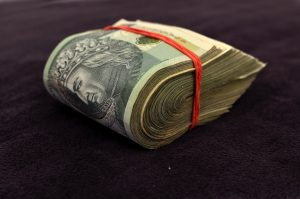Leverage ratio is a term used in forex trading that refers to the ratio of the trader’s own funds to the amount of funds borrowed from a broker. Forex trading is a highly leveraged market, which means that traders can access large amounts of money with a relatively small amount of capital. This allows traders to increase their potential profits, but it also carries significant risks.
Leverage ratio is expressed as a ratio or a percentage, and it indicates how much buying power a trader has in the market. For example, a 100:1 leverage ratio means that for every dollar the trader has in their account, they can control $100 in the market. This can result in potential profits, but it can also result in significant losses if the market moves against the trader.
The use of leverage is a double-edged sword in forex trading. On the one hand, it allows traders to access more money and potentially make larger profits. On the other hand, it also increases the risk of losses. This is because leverage amplifies both gains and losses. A small move in the market can lead to a significant gain or loss, depending on the size of the leverage.
For example, if a trader has a leverage ratio of 100:1 and they buy a currency pair worth $10,000, they only need to have $100 in their account. If the currency pair moves in their favor by 1%, they will make a profit of $100. This represents a 100% return on their investment. However, if the currency pair moves against them by 1%, they will lose $100, which represents a 100% loss on their investment. This is why leverage can be so dangerous for inexperienced traders.
It is important for traders to understand the risks associated with leverage and to use it wisely. While leverage can increase potential profits, it can also lead to significant losses. Traders should only use leverage with money they can afford to lose and should never risk more than they can afford to lose.
The amount of leverage available to traders varies depending on the broker and the country in which they are trading. In the United States, the maximum leverage allowed for retail traders is 50:1, while in other countries it can be as high as 500:1. The higher the leverage, the greater the risk of loss.
Traders should also be aware of the margin requirements associated with leverage. Margin is the amount of money required by the broker to open a position. This amount is typically a percentage of the total trade size and varies depending on the leverage ratio. For example, if a trader has a leverage ratio of 100:1 and they want to buy a currency pair worth $10,000, they will need to have at least $100 in their account as margin.
If the market moves against the trader and their losses exceed the amount of margin they have in their account, the broker may issue a margin call. A margin call is a request for the trader to deposit more funds into their account to cover the losses. If the trader does not deposit more funds, the broker may close out their position, resulting in a loss.
In conclusion, leverage ratio is a term used in forex trading to describe the ratio of the trader’s own funds to the amount of funds borrowed from a broker. While leverage can increase potential profits, it also carries significant risks. Traders should use leverage wisely and only risk money they can afford to lose. They should also be aware of the margin requirements associated with leverage and understand the risks of a margin call. With proper risk management, traders can use leverage to their advantage and potentially increase their profits in the forex market.





